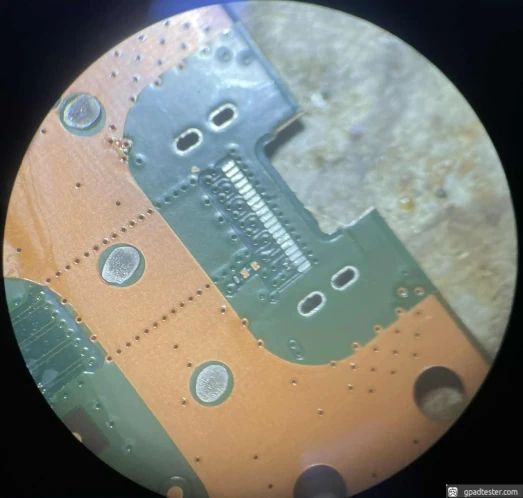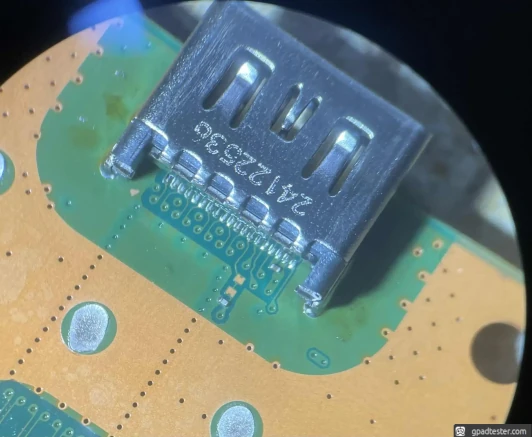PS5 PRO HDMI Replacement
Note: Replacing HDMI requires experience and the right equipment!
● Issue Description
- Visible mechanical damage.
- Video or audio signal depends on cable position or movement.
- No video or audio output at all.
● Diagnostics
- Inspect the HDMI port for visible physical damage.
- Check the console light – a solid white light means the system is working.
- Connect a controller to verify the console responds properly.
- Perform a diode test as shown below. Readings may vary slightly, but pay attention to the position of the green, red, and white pins – this shows whether the signal lines are in good condition.
HDMI diode test: PS5 FAT
GND
1
OL
2
0.07
3
0.84
4
0.84
5
0.07
6
0.84
7
0.84
8
0.07
9
0.84
10
0.84
11
GND
12
13
GND
14
0.07
15
0.84
16
0.70
17
OL
18
0.69
19
0.69
20
0.07
21
0.56
22
0.70
23
OL
24
GND
HDMI diode test: PS5 PRO
GND
1
0.85
2
0.07
3
0.85
4
0.85
5
0.07
6
0.85
7
0.85
8
0.07
9
0.85
10
0.85
11
GND
12
13
GND
14
0.07
15
0.85
16
0.71
17
OL
18
0.70
19
0.70
20
0.07
21
0.64
22
0.70
23
OL
24
GND
● Repair Steps
- The PS5 motherboard is durable, but precise temperature control is important. Use hot air at about 420°C with airflow level 2–3 and preheat the board to 160°C.
- Apply flux and a small amount of fresh solder to the joints.
- Heat the port evenly until the solder melts. You can use a soldering iron to help with the process.
- Be careful with the small SMD components behind the HDMI port – they are easy to move or damage with too much heat.
- Clean the pads thoroughly once the old port is removed.
- Position and solder the new HDMI port in place carefully.
● Testing
- Perform another diode test to confirm correct readings.
- Connect the console to a monitor or TV and verify stable video and audio output.
● Gallery


